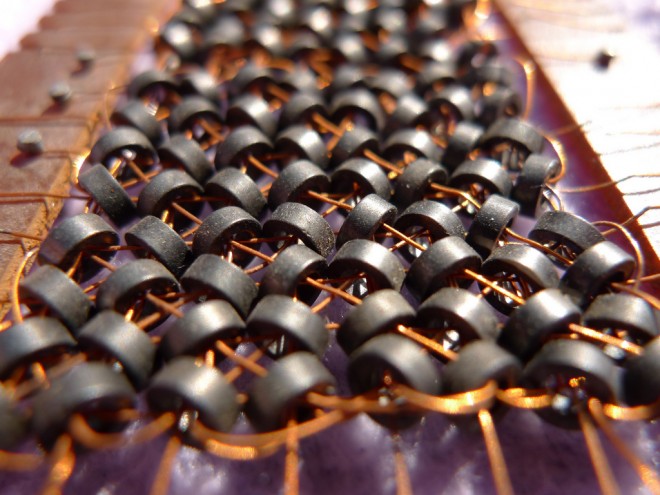The same day, 1951, the birth of RAM

On May 11, 1951, Jay Forrester sent his description of the memory core matrix to the US Patent Office. This day can be considered the birthday of RAM-memory.
At a time when computers occupied entire rooms and weighed hundreds of kilograms, the memory of the then computer relied on cathode rays as a source of information. However, the US military needed a more powerful machine, primarily capable of calculating flight simulations in real time. It is not surprising that the technology that allowed increasing capacity came out of the doors of the Massachusetts Institute of Technology.
Forrester was the MIT professor who, together with his team led the development of three-dimensional magnetic structure, code-named "Project Whirlwind» ( by Project Whirlwind) What you see in the picture above is a complete analogue of the first random access memory developed by the researchers of the Institute. The whole structure is a grid of wires with cores of magnetic rings. Each ring contains 1 bit of information available for one write-read cycle.
Of course, Jay Forrester and his followers did not consider this technology as “simple”, but today, of course, there is nothing fantastic in this. In short, the first RAM was practical, reliable, and relatively fast. The time it took to request and receive information was equal to a microsecond. Which is hundreds of thousands of times slower than modern RAM, but for 1951 it was a scientific achievement.
Bernard Widrow, who worked on the same team as Forrester, gave an interview last year to the Edison Technical Center , where he said, “I couldn’t imagine what would happen to RAM in a million years, not to mention half a century.” The Whirlwind Project remained active until 1959, although the technology had never been used in flight simulators. But the patent was obtained and what it all resulted in today, I think there is no need to explain.
source: Wired
